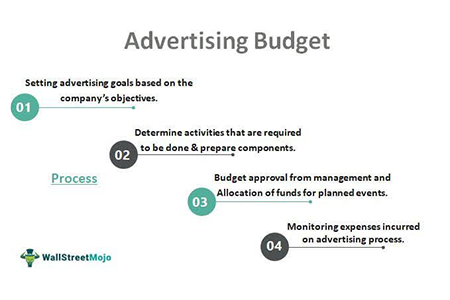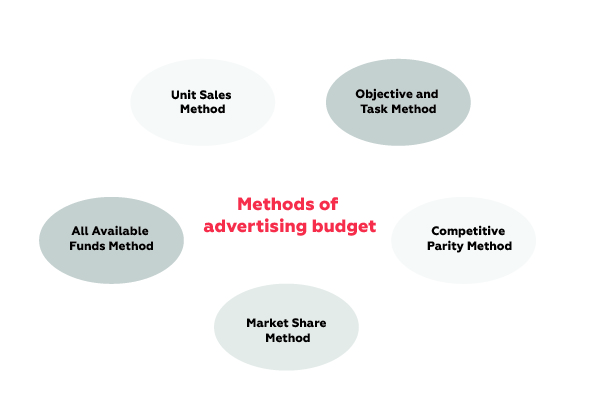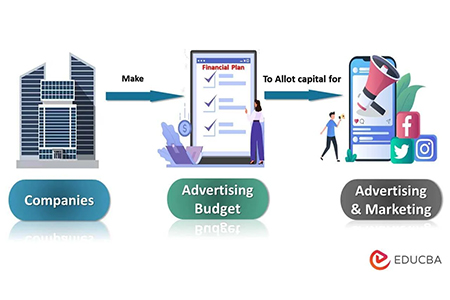An advertising budget, of course, is a central part of any business strategy that decides how much should be spent on marketing products or services. Otherwise, companies may overspend or underspend in reaching their target markets. In this blog, we are going to delve into why an advertising budget is important, its value in fueling success, and how it can contribute to boosting returns, perfecting strategies, and staying a step ahead of the competition today. Let's find out how to make an awesome advertising budget!
What Is an Advertising Budget?
An ad budget is a monetary plan that dictates the amount of money a company should spend on advertising its products or services through different forms of media. If well written, the budget guarantees that funds are effectively spent and that the marketing efforts are exposed to the right audiences at values that would not break the bank. The budget serves as a guideline through which companies can know what channels to select, how to measure performance, and how to improve their strategies for the most effective market exposure.

Importance of Advertising Budget in Marketing
An ad budget is useful in organizing and economizing a marketing campaign. Ensure that spending will occur in the future by prioritizing strategic priorities to have maximum return on investments without incurring unnecessary costs. With a clear budget, a company can monitor and control its expenses and derive efficiencies in campaigns as adjustments are made to maximize return on investment. Efficient budgeting allows a company not to waste money, allowing it to invest in high yield areas for sustained growth.

Advertising Budget Objectives – Why Does It Matter?

Planning & Cost Control – Managing Expenses Effectively
Planning is the foundation of an effective advertising budget. Budgets with strategic priorities place companies far off the track of poor performing channels through the hazards of over investing. Cost control protocols lead to avoiding overspending while stretching every INR to affect the total marketing success of advertising campaigns. Such practices facilitate making sound financial projections and decisions by aligning ad spending with both short, and long term objectives.
Optimizing Marketing Strategies – Allocating Funds for Best-Performing Channels
By directing money toward its most productive channels, one major goal of any ad budget is to optimize marketing activity. Keeping tabs on how well each of these channels is performing, from the digital world to TV, radio, or print surveys, will help determine which channels are performing best at gauging effectiveness. Money can then be shifted to put more into the highest having channels. These engagement and conversion rates, and thus, the ROI, are ensured to be the best possible. Continuous optimization means companies can keep up their competitiveness and still be agile when it comes to changes in consumer activity or market trends.
Measuring Advertising Effectiveness – Tracking ROI and Campaign Success
Performance monitoring of advertisement campaigns would be one major objective of any marketing budget. Tracking ROI (return on investment) often lets companies analyze the impact of their marketing expenses and determine whether the campaigns meet the intended objectives. The continuous assessment of how successful different campaigns prove enables businesses to optimize strategies and budget reallocations for performance. Such measurement and adaptability serve towards giving a much greater responsive marketing strategy with the resources always focused more towards optimizing replacement for the maximum return possible.
Competitive Advantage – Ensuring a Strong Market Presence
It is only a strategic advertising budget that will guarantee such positive competence. Focused investments in ad messages will make increased brand visibility, engage consumer loyalty, and engender longer memories in the market. Above all, it engenders competition, as continued and intelligent spending on advertising will keep the brand afloat in the minds of consumers. With proper budget allocation, it promises sustainable growth and safeguards market niches from coming competition.
Methods for Setting an Advertising Budget

Percentage of Sales Method – Allocating a Fixed Percentage of Revenue
The percentage of sales method is perhaps the simplest method of determining an advertising budget. The technique involves assigning a fixed percentage of sales revenue to marketing. It is particularly relevant for businesses that would prefer their advertising budget to expand in sync with their sales, striking a balance between cost and gain. It is easy and scalable, however, companies need to be sure the percentage is big enough to achieve their marketing goals.
Competitive Parity Method – Matching Competitors’ Ad Spend
The competitive parity strategy entails establishing an advertising budget according to the expenditure of competitors. By monitoring industry trends and keeping up with or surpassing competitors' investments, companies hope to be competitive in the industry. This strategy is especially applicable in businesses where brand perception remains vital to being competitive. Nevertheless, firms should consider ensuring that their budget is not solely influenced by competitors but also by their marketing objectives and strategies for expansion.
Objective & Task Method – Budgeting Based on Campaign Goals
The objective & task approach budgets are based on the particular objectives of an advertising campaign. Companies first establish specific marketing goals, such as building brand awareness, driving sales, or introducing a new product and then allocate the cost of the activity required to reach the goal. The approach ties the budget to measurable results, providing a more strategic and customized method of advertising expenditure.
Affordability Method – Spending Based on Available Resources
The affordability approach is all about establishing a budget in terms of the amount of money a company can afford to spend. This method is normally applied by small companies or new businesses with minimal resources. Although this approach guarantees financial stability, the budget must still be enough to generate worthwhile marketing outcomes. By determining cheap but effective advertising channels, companies can make the most out of their marketing efforts without overstraining their financial capacity.
How to Create an Effective Advertising Budget?

Identifying Business Goals and Marketing Objectives
An efficient advertising budget is to sit down and clearly strategize what the company is after in itself and from its marketing: What does this business want from itself? Increase brand visibility, sales within the new market, or going into the market with new products? This enables identification of those selling and promoting points towards which investments of resources would be made and those marketing strategies devised to meet particular targets. Very measurable objectives, for example, help decide the most appropriate channels of the customer, the measures of success, and guarantees that the budget adheres to efficient use.
Choosing the Right Advertising Channels
Identifying the most appropriate type of advertising media is a sure guarantee that the marketing message gets to the target audience. Whether it be in social media, search engine ads, or on TV and print, businesses have to consider where their audience drives spend and for these communications to have maximum impact. If most consumers will see a mixture of digital and traditional media, they are most probably going to advertise more successfully.
Balancing Between Digital and Traditional Advertising
A sound advertising budget will describe both digital and traditional advertising and spread the reach across platforms. Instant results are measurable with digital advertising, but credibility and broad reach extend more with channels like TV, radio, and print. It is then proper to assume that a well balanced budget strategy derives both worlds in cost budget efficient operation and maximizes reach.
Monitoring and Adjusting the Budget Based on Performance
Today, the advertising world is changing and it is really important to be on top of campaign performance as events unfold. Continuous checking of performance thus becomes a basis for adjusting the advertising budget by realigning it with resource spending efficient within the institution or considering shifting funds to high-performing channels, cutting down on unproductive spend, and adjusting campaigns by relying on inputs for data insights. All this helps keep businesses quite agile and responsive, going all the way to greater ROI.
FAQs
The advertising budget serves as the driving force in maintaining consistent brand visibility, ensuring that intended marketing activities reach the required targets. When funds are adequately allocated, an enhancing factor ensures brand recognition and strengthens consumer trust over a gradual period of time.
Typically, 5 to 10 percent of revenue is set aside for advertising by companies, subject to variances based upon size, industry, and marketing aspirations. However, there must also be an interplay between the finances in its wide sense and the marketing necessities.
For small businesses, developing an advertising budget is possible through low-cost marketing channels, such as tracking their goals and performance. With high-return strategies, the greatest impact can be achieved without increased costs.
Without an advertising budget, a business runs the risk of overspending or underutilizing advertising altogether, missing out on effective channels to their target audience. With financial strategies being put into place without purpose, resources may even get wasted, and effective marketing would always be lost in the process.
To calculate an advertising budget for their company, a business starts with revenue, an outline of its marketing goals, and expected costs for advertising. Disciplines such as percentage of sales and objective-based budgeting provide guidance in ensuring the understood budget supports the business objectives and the anticipated outcomes.



